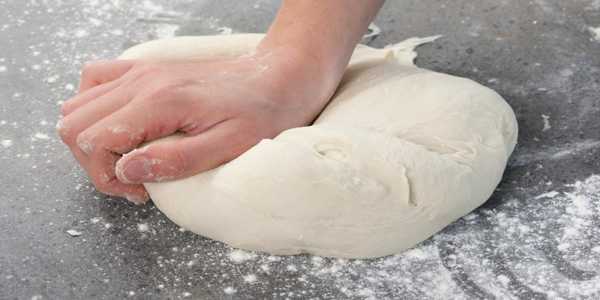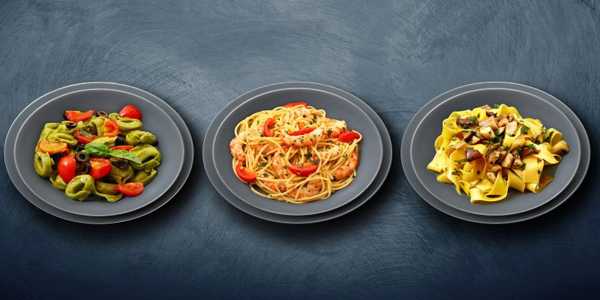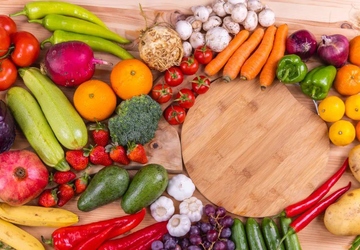Who doesn't love a plate of fresh, silky pasta? There's something incredibly satisfying about making your pasta from scratch. It's easier than you think, and the results are far better than anything you'll find in a box.
Homemade pasta isn’t just about taste—it's about control. You get to choose the ingredients, texture, and shape, ensuring a fresh and personalized meal every time. Whether you're a beginner or someone looking to refine your technique, this guide will walk you through the process step by step.
Let’s dive in and discover the simple joy of making pasta at home.
The Basics: What You Need
Making homemade pasta doesn’t require fancy ingredients or expensive tools. In fact, you probably have everything you need in your kitchen already.
Essential Ingredients:
Flour
The base of your pasta. You can use all-purpose flour, but “00” flour is best for a silky texture, while semolina flour adds a bit of chewiness.
Eggs
Fresh, room-temperature eggs create a rich and smooth dough. Some recipes use just egg yolks for a more luxurious texture.
Salt
A pinch of salt enhances the flavor.
Olive Oil (Optional)
Helps with elasticity and prevents dryness.
That’s it! No preservatives, no artificial ingredients—just pure, fresh pasta dough.
Tools You Might Need:
Mixing Bowl
If you prefer less mess, mix the dough in a bowl instead of directly on the counter.
Rolling Pin or Pasta Machine
You can roll the dough by hand, but a pasta machine helps you get an even thickness.
Sharp Knife or Pasta Cutter
Useful for cutting different pasta shapes.
Fork or Dough Scraper
A fork is handy for mixing, while a dough scraper helps with kneading.
Making the Dough: Step by Step
Form the Dough
Pour the flour onto a clean surface or into a large bowl. Make a well in the center, like a small volcano. Crack the eggs into the well, add a pinch of salt, and gently mix with a fork, slowly incorporating the flour. Once it starts forming a sticky dough, switch to using your hands.
Knead the Dough
Kneading is where the magic happens. Work the dough with your hands by pressing it forward, folding it, and turning it. This develops the gluten, which gives the pasta its structure. Knead for about 10 minutes until the dough is smooth and slightly elastic. If it feels too dry, add a teaspoon of water. If it’s sticky, sprinkle a little more flour.

Let It Rest
Wrap the dough in plastic wrap and let it rest at room temperature for at least 30 minutes. This step is crucial—it allows the gluten to relax, making it easier to roll out and shape.
Rolling and Shaping the Pasta
Once the dough has rested, it’s time to shape it into pasta. You can do this by hand with a rolling pin or with a pasta machine.
Roll It Thin
Divide the dough into smaller sections to make it easier to handle. Roll out each piece as thin as possible. If you’re using a pasta machine, start at the widest setting and gradually move to a thinner setting until you reach the desired thickness.
Cut Your Pasta
• Slice the dough into long, thin ribbons to make fettuccine or tagliatelle.
• Cut the dough into wider strips to create pappardelle.
• Leave the dough in large rectangular sheets for lasagna.
• Place small spoonfuls of filling on one sheet, cover with another, and press around the edges to make ravioli.
• Use a pasta cutter or attachment to create thin strands for spaghetti.
Prevent Sticking
Dust the freshly cut pasta with a little semolina or all-purpose flour to prevent sticking. Lay it out in loose nests or hang it on a pasta rack to dry slightly before cooking.
Cooking Fresh Pasta the Right Way
Fresh pasta cooks much faster than dried pasta. Follow these simple steps for perfect results:
• Bring a large pot of salted water to a rolling boil.
• Drop in the pasta and stir gently to prevent sticking.
• Cook for 2-4 minutes, depending on thickness. Fresh pasta cooks quickly!
• Drain and toss immediately with your favorite sauce.
Pairing Your Pasta with the Right Sauce

What’s pasta without a delicious sauce? Here are some classic pairings to make your homemade pasta shine:
Tagliatelle & Bolognese
Wide noodles hold up well to rich, meaty sauces.
Spaghetti & Marinara
A classic combination with bright tomato flavors.
Fettuccine & Alfredo
A creamy, cheesy sauce that coats every strand.
Pappardelle & Mushroom Sauce
A hearty, earthy pairing perfect for thicker noodles.
Ravioli & Brown Butter Sage Sauce
Light and buttery with a touch of crisp sage.
Common Mistakes and How to Avoid Them
Even the best home cooks make mistakes. Here are a few common ones and how to fix them:
Dough Too Dry or Crumbly
Solution: Add a teaspoon of water or an extra egg yolk and knead until smooth.
Dough Too Sticky
Solution: Dust your surface with a bit of flour and continue kneading.
Overcooking Fresh Pasta
Solution: Fresh pasta only needs a couple of minutes to cook. Taste-test early to avoid mushy pasta.
Not Letting the Dough Rest
Solution: Be patient! Resting the dough makes rolling and shaping much easier.
Skipping the Salt in Cooking Water
Solution: Always salt the boiling water generously—pasta absorbs the salt as it cooks, enhancing its flavor.
Why Homemade Pasta is Worth It
Sure, store-bought pasta is convenient. But homemade pasta? It’s on a whole different level.
Better Taste: Freshly made pasta has a delicate, rich flavor that boxed pasta just can’t match.
No Preservatives: You know exactly what’s in it—no chemicals, just real food.
Fun to Make: Rolling and shaping pasta is a hands-on experience that’s both relaxing and rewarding.
Impress Your Guests: Nothing beats the reaction of friends or family when you serve them homemade pasta.
Once you start making pasta from scratch, you might never go back to the store-bought kind. The texture, the freshness, and the pure satisfaction of making it yourself are unbeatable.
So why not give it a try? Grab some flour, crack a few eggs, and start kneading. Your next homemade pasta dish is just a few simple steps away!





